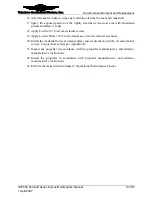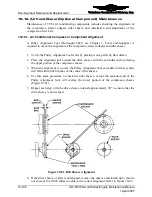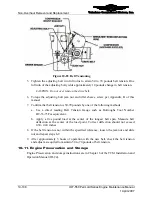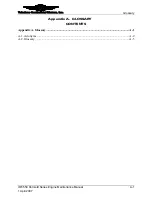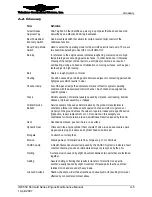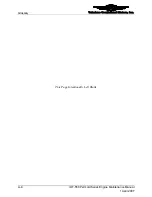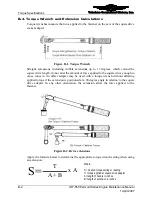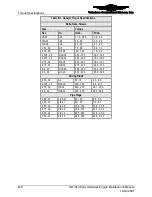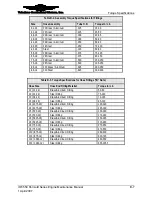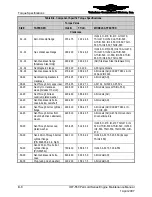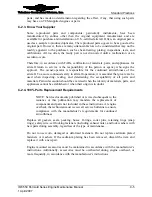
Torque Specifications
Teledyne Continental Motors, Inc.
TM
B-2
IOF-550 Permold Series Engine Maintenance Manual
1 April 2007
B-1.
General Information
Tables provided in this appendix list torque values for hardware on TCM’s aircraft
engines. Refer to appropriate manufacturer’s accessory overhaul manuals for specified
torque on accessories. Table B-1 is for bolts, nuts, screws, driving studs, and pipe plugs;
Table B-2 is for fittings, Table B-3 is for hose fittings, and Table B-4 lists specific torque
values. The torque values provided in Table B-4 must be used for the specific application.
Table B-6 is specific to FADEC components.
WARNING
Torque values listed are for use with clean 50 weight aviation
engine oil applied to the threads, unless otherwise specified in
Table B-5 which lists specific torque values for non-lubricated
hardware.
Prior to torquing any hardware, unless otherwise specified, apply SAE 50 weight aviation
oil to hardware listed in Table B-1 through Table B-4. If an application is not listed, the
general torque limits (in Table B-1, Table B-2 or Table B-3) must be used.
WARNING
Before installing nuts and bolts, verify the fastening hardware
is lubricated where necessary as instructed. Inspect all
fasteners for proper plating and thread form. Failure to verify
a fastener’s serviceability or to correctly lubricate the fastener
as directed prior to installation and torquing will result in the
fastener not being properly pre-loaded. Subsequent failure of
the fastener may occur.
B-1.1. Torque Tips
•
Check Table B-4 and Table B-5 first to verify whether the hardware to be torqued
requires a specific torque or treatment other than those for general hardware sizes listed
in Table B-1 through Table B-3.
•
Before torquing the hardware, verify that the hardware size is correct.
•
The accuracy of any torque indicating wrench depends on a smooth application of force
and current calibration traceable to the National Bureau of Standards.
•
If cotter pin holes must be aligned, set the torque wrench at the low limit and tighten the
nut to the first hole beyond this torque, but do not exceed the maximum torque limit
specified. This torquing procedure must be followed for all applications requiring cotter
pin hole alignment except for connecting rod nuts.
•
If a nut slot cannot be aligned with a cotter pin hole within the specified limits, substitute
another serviceable nut to attain alignment.
•
If the cotter pin hole in a stud lies beyond the nut slots, when the nut has been torqued
properly, check the stud for proper installation or for backing out.
•
Check studs for necking.
•
Check the part for reduced thickness resulting from wear or incorrect part.


